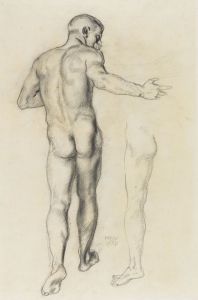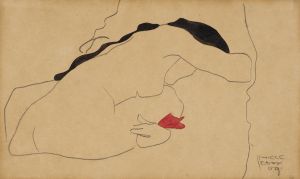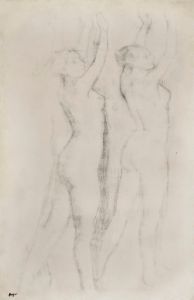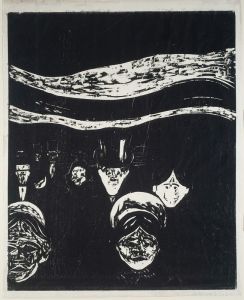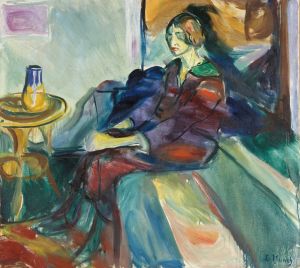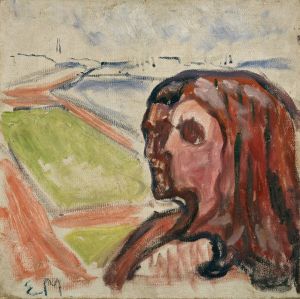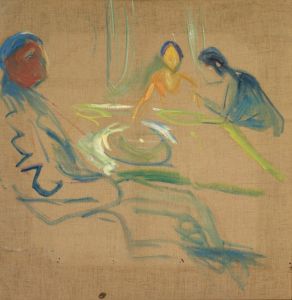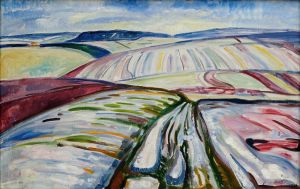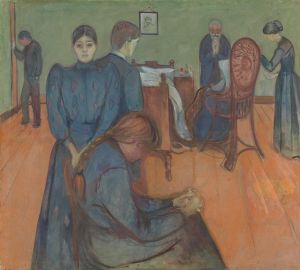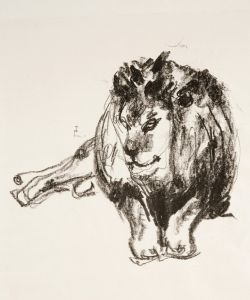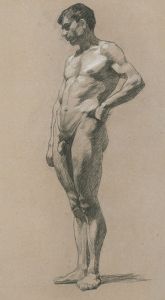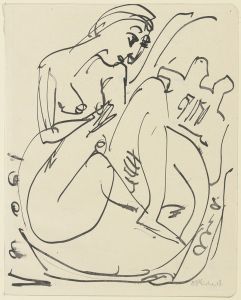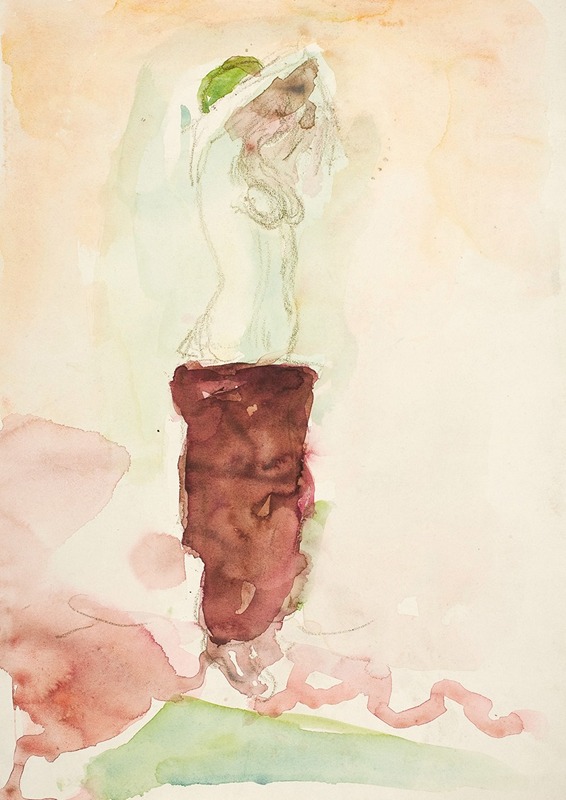
Stående halvakt
A hand-painted replica of Edvard Munch’s masterpiece Stående halvakt, meticulously crafted by professional artists to capture the true essence of the original. Each piece is created with museum-quality canvas and rare mineral pigments, carefully painted by experienced artists with delicate brushstrokes and rich, layered colors to perfectly recreate the texture of the original artwork. Unlike machine-printed reproductions, this hand-painted version brings the painting to life, infused with the artist’s emotions and skill in every stroke. Whether for personal collection or home decoration, it instantly elevates the artistic atmosphere of any space.
Edvard Munch, a Norwegian painter and printmaker, is renowned for his evocative and emotional works that often explore themes of existentialism, love, and death. One of his lesser-known works, "Stående halvakt" (Standing Half-Nude), exemplifies his distinctive style and thematic focus. While this particular piece may not be as famous as "The Scream," it still reflects Munch's exploration of the human condition and his innovative approach to art.
"Stående halvakt" is a painting that depicts a female figure in a standing position, partially nude. The composition is characteristic of Munch's work, where the human form is central to the narrative and emotional expression of the piece. Munch often used the human body as a vessel to convey complex emotions and psychological states, and this painting is no exception. The figure's posture and expression can be interpreted as introspective, capturing a moment of vulnerability or contemplation.
Munch's use of color and brushwork in "Stående halvakt" is also noteworthy. He often employed a palette that included muted tones and contrasting colors to evoke mood and atmosphere. His brushwork could be both vigorous and delicate, adding texture and depth to his compositions. This technique allowed him to convey the emotional intensity that is a hallmark of his work.
The painting fits within the broader context of Munch's oeuvre, which frequently dealt with themes of isolation, anxiety, and the complexities of human relationships. Munch was influenced by Symbolism and the broader Expressionist movement, which sought to represent emotional experiences rather than physical reality. His work often reflects his own personal struggles and the existential questions that preoccupied him throughout his life.
Munch's artistic journey was shaped by his exposure to various European art movements and his personal experiences. He was deeply affected by the deaths of his mother and sister during his childhood, which left a lasting impact on his psyche and artistic vision. These experiences are often mirrored in his work, where themes of mortality and existential dread are prevalent.
"Stående halvakt" can be seen as part of Munch's exploration of the female form and its symbolic representation in art. Women in Munch's paintings often embody a range of emotions and roles, from the nurturing mother to the femme fatale. This complexity reflects Munch's ambivalence towards relationships and his fascination with the duality of human nature.
While "Stående halvakt" may not have the same level of recognition as some of Munch's other works, it remains an important piece within his body of work. It showcases his ability to convey deep emotional resonance through the depiction of the human figure and highlights his contribution to the development of modern art.
Munch's legacy is significant, as he paved the way for future generations of artists to explore psychological and emotional themes in their work. His influence can be seen in the works of later Expressionists and other modern artists who sought to capture the complexities of the human experience.
In summary, "Stående halvakt" by Edvard Munch is a compelling example of the artist's exploration of the human form and emotional expression. Through his distinctive style and thematic focus, Munch continues to be celebrated as a pioneer of modern art, whose work resonates with audiences to this day.





